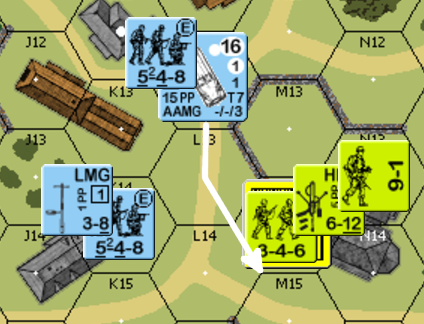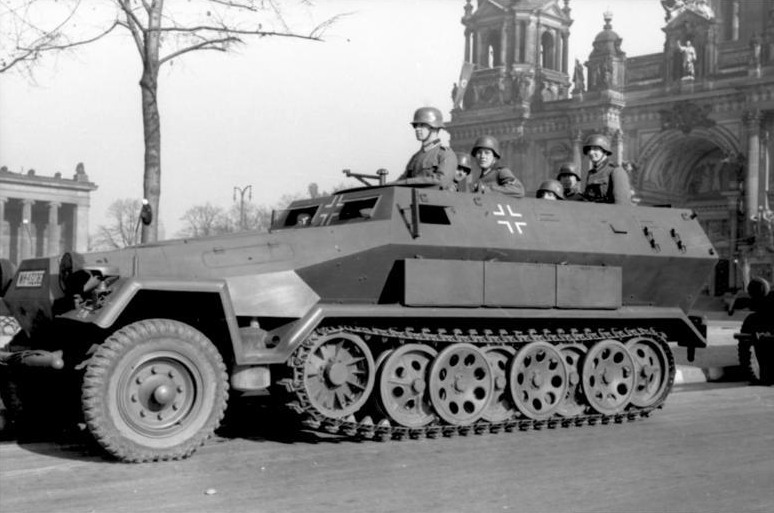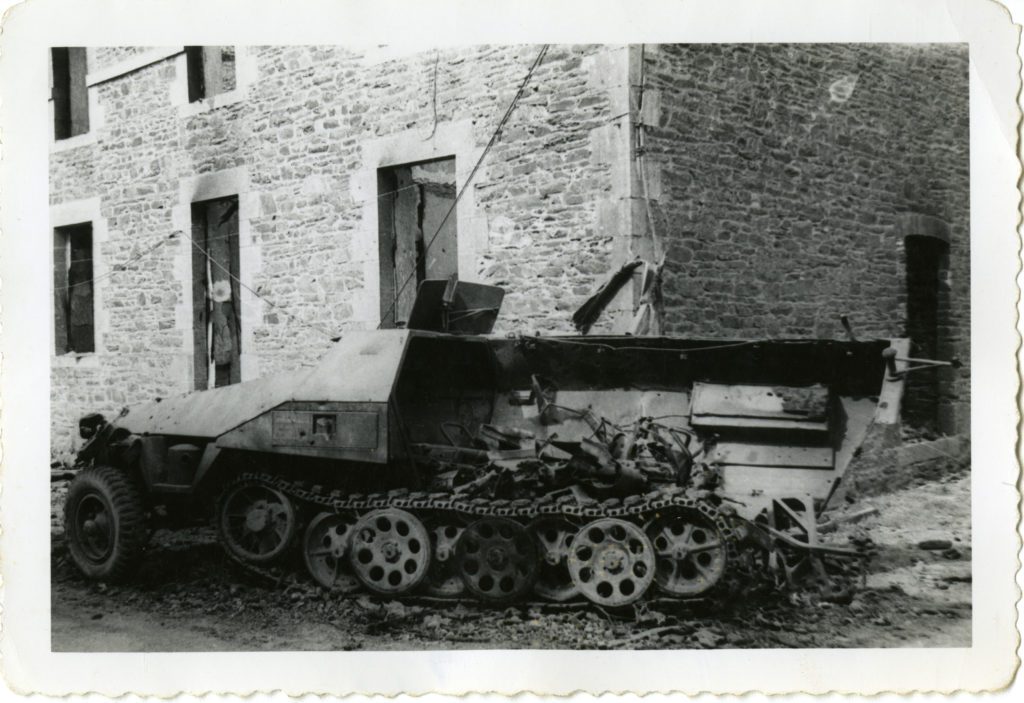This is the second in a series of articles on defending against “Sleaze Freeze”. If you haven’t seen the first, you can find it here: Defending Against “Sleaze Freeze”: A First Example. If you haven’t already, I encourage you to give it a read as we won’t be covering the same ground again. In this article, we will discuss Target Selection Limits as they apply to upper level units and some of the options available to these units in such situations. Let’s get started.
Know the Rules
In addition to the rules covered in the last article, we will refer to A7.211, D5.31, and D6.62 in this article. Take a moment to read these so the examples below are easier to understand. As alluded to in the first article, knowing the rules and their proper application is the definition of tactics in an ASL context. While this is more broadly applicable throughout ASL, it is especially important when trying to keep a defensive strongpoint focused on denying the enemy the ability to fulfill their Victory Conditions (VC).
Example 1

Let’s return to board 10a. Once again the Germans want to close on the church. This time the Panther is preoccupied, so it falls on the panzergrenadiers in their trusty SPW 251 half-track (ht) to approach and “sleaze freeze” the American position.
The Americans again have an option to Street Fight in L13, just as they did before. The DRMs are nearly the same. This time, the ht is Open Topped (OT) adding a -2 DRM. However, the Passenger squad qualifies as Escorting Personnel, which adds a +2 DRM (A11.51) to the equation. Even with the changes in DRMs, the net attack is the same as the one in my previous article since the new DRMs cancel each other out.
The Americans can also opt to CC Reaction Fire (CCRF) in their own Location. Again, the net DRMs are the same, with the new OT and Escorting Personnel DRMs cancelling one another.
The Americans can also now elect to fire the HMG as ordnance. Any attack in L12 would be against a hull down ht. Any attack in L13 is against a Moving Vehicular Target and a small target (+3 total target based DRM). The leader would add a -1 DRM. The AFV is hit on an Original DR <= 8. An MGs Original TK# is a 4. Its Modified TK# is a 6. Against this ht, the Final TK# would be a 5. If it hits, the attack would also cause a Specific Collateral Attack (D.8) depending on the outcome of the TH/TK attempt. Not a bad attack, but the odds favor the Germans here. But if immobilized, stunned, or eliminated before it enters the American hex, this would prevent the application of any Target Selection Limits (TSL).
Also, the American options for firing small arms remain more or less unchanged when the halftrack is in L13. The attacks would attack with the same Firepower (FP) and leave the same Residual FP (RFP). This time, however, if the halftrack is CE in L13, there will be a +2 attack against vulnerable PRC. Should the Americans shoot everything in L13, this would be a 24 +1 attack against vulnerable PRC. The attack yields a NMC on an Original DR of 11. Even with 8 morale PRC, this attack has a good chance to Stun the ht and break the Passenger. If the ht is stunned, the Americans again prevent the imposition of TSL.
What’s New

To avoid this, the German player is likely to Button Up (BU) his AFV in order to avoid the 24 +1 attack. This removes any chance of stopping the AFV with a small arms attack in L13. The best chance the American player may have is shooting the MG as ordnance. Some chance of stopping the ht is better than no chance at all.
When the ht gets into their Location, the Americans could elect to shoot the HMG as ordnance. Their Modified TK# remains the same as it was in L13. As with Street Fighting (SF), it is better to attack outside the hex than inside it. There is no marked improvement in the same hex attack and an immobilized AFV still imposes TSL. Waiting only increases the chances the position will be inflicted with TSL.
When the ht gets into the American Location, being BU no longer protects the PRC because the AFV is OT (A7.211). This means any attack against the PRC is conducted as Triple Point Blank Fire (TPBF). If the American opts to First Fire in hex, the attack would be a 36 +1. Even with an 8 morale, it is not unreasonable to expect the Passengers and Crew (PRC) to break or Stun respectively. This would still inflict TSL on the Americans. Even a Stunned AFV causes TSL.
There are also differences in CC and Ambush. Being Stunned adds a +1 drm to any Ambush dr. If Stunned, the AFV goes BU and immediately Stops. A +1 drm applies to Ambush for BU status. If the Passenger breaks, an additional +1 Ambush drm applies. When stunned with a broken Passenger, the German Ambush drms are +5. The Americans are -1. The Americans are likely to Ambush the Germans should the Germans advance Infantry into their Location and create an Ambush opportunity. If the Americans get the Ambush, then the VC should dictate their response.
Example 2

This time, the Americans have retreated to the Steeple. To do so and not overstack, the American deployed the squad manning the HMG. Since the American is no longer at Ground level, they do not have any SF or CCRF options. It is not all bad news for the Americans.
They can continue to use the HMG for ordnance TH/TK attempts. None of this changes but is it the best way to attack?
Implications of a Reduced CE DRM
Let’s first look at D5.311. In it, it says “The Inherent crew (as well as each Passenger) of a vehicle receiving fire (including Fire Lane Residual FP)… through an unarmored Target Facing/Aspect (C3.9); including any OT AFV receiving either Air Bursts or fire from a higher elevation whose elevation advantage is > the range [5.31]… is Vulnerable even if BU, and receives no (or a reduced; 5.31) CE DRM. Consequently the crew is not susceptible to Stun/Recall from such an attack; it is instead subject to PTC/MC/K/KIA results. If it breaks it must rout from the vehicle using normal Infantry rout procedures …”

I have cut this rule down to make it a little easier to read. Let’s see how it applies. When the ht moves to L13, the range is 1. The elevation difference between the target and shooter is 2. The elevation difference is > the range to target. Referring to D6.62, we see this reduces the CE DRM to +1. We also see such an attack will now break or pin the crew rather than Shock or Stun it (D5.311).
The AFV is also subject to an attack as an unarmored vehicle under the provisions of A7.308. To resolve this, first attack the AFV on the ★ vehicle line. If the AFV is destroyed, the PRC rolls for Crew Survival normally. If not destroyed, the PRC is attacked with a +1 DRM and any unit which breaks or pins—including the crew—is broken or pinned. Being BU does not change this.
Putting it All Together
So, using the actual units in this example, when the ht moves into L13, the American HMG attacks with 6 FP doubled to 12. The CE DRM is +1. Resolve the attack on vehicle ★ line on the 12 column. A Final DR 8 immobilizes the ht. A Final DR of 5 to 7 eliminates the ht and the PRC can roll for Crew Survival. Lastly, a Final DR ≤ 4 results in a Burning Wreck with no chance of survival for the PRC. The PRC is attacked on the 12 column with no DRMs if the AFV is not destroyed. Again, being BU does not change this.
In-Hex Only Gets Worse

When it gets into the American hex, the ht inflicts TSL because the American units qualify for TPBF, even though the ht and its Passengers don’t (A7.211). Now the CE DRM is zero. Conduct the attack on the ★ line is on the 16 column (TPBF). A Final DR 9 immobilizes the halftrack. A Final DR of 5 through 8 destroys the ht. The ht becomes a burning wreck on a Final DR ≤ 4. If the AFV is not destroyed, its PRC are attacked on the 16 column with a -1 DRM. Being BU does not change this.
Stepping outside this example for a moment, when attacking an OT vehicle with Air Bursts, the same principles apply. If you have a small mortar, you can use this to attack an AFV bypassing one of your positions. If the attack occurs during First Fire, the only unit affected is the moving unit bypassing your Location (A8.1). Attacking the AFV in any other fire phase would put your own units at risk as well.
If SMOKE is the aim, then bypassing with an OT AFV is certainly one way to do it.
Conclusion
As we continue to untangle ways to defend against Sleaze Freeze, I hope it is becoming more apparent this isn’t as one-sided as it might have originally seemed as a new player. I also hope it is becoming more clear that knowing the rules is essential to knowing your options. Tactics is the proper application of those options and knowing the rules is the basis of good tactics. Until next time. — jim


Outstanding analysis, as usual.
Back when I was a . . . low-intermediate player (to put it charitably) . . . sleaze-freeze used to drive me insane. Now I know how to defend against it, and this article is a good review of all the tools at the sleaze-frozen player’s disposal.
Well done!